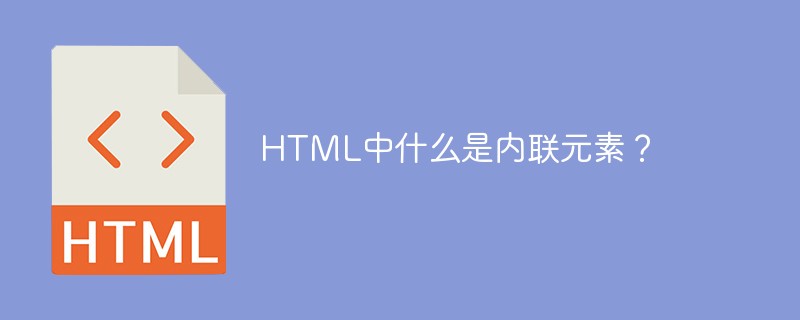
In HTML, inline elements refer to elements whose display attribute is inline; inline elements are also called inline elements. They always appear "inline" with the flow of text on a web page. These elements will not be included in it. Generates a "separator" before or after itself, so it can appear within the content of another element without disrupting its display.

(Recommended tutorial: html tutorial)
According to the CSS specification, each web page element has a The display attribute is used to determine the type of the element. Each element has a default display attribute value, and elements with a display attribute of inline are inline elements.
Inline elements are also called inline elements or inline elements. They are generally basic elements based on semantic level. Inline elements can only accommodate text or other inline elements, and are usually included in block elements. Common inline elements include "a, b, br", etc.
Inline elements are generally containers for content. Generally, inline elements can only contain content or other inline elements. The width and length are determined by the content and cannot be set. They can peacefully coexist with other elements. in a row. Inline elements are suitable for displaying specific content.
Features:
1, and other elements are on the same line;
2, height, line height, top and bottom margins cannot be changed;
3. The width is the width of its text or picture and cannot be changed.
Commonly used inline (inline) elements:
* a - anchor point
* abbr - abbreviation
* acronym - first word
* b - bold ( Not recommended)
* bdo - bidi override
* big - big font
* br - line break
* cite - quote
* code - computer code (required when citing source code)
* dfn - Define the field
* em - Emphasis
* font - Font setting (not recommended)
* i - Italic
* img - Image
* input - Input box
* kbd - define keyboard text
* label - table label
* q - short quote
* s - underscore (not recommended)
* samp - define sample computer code
* select - item selection
* small - small font text
* span - commonly used inline container, defining blocks within text
* strike - center line
* strong - bold emphasis
* sub - subscript
* sup - superscript
* textarea - multi-line text input box
* tt - telex text
* u - underline
* var - define variables
For more programming-related knowledge, please visit: Introduction to Programming! !
The above is the detailed content of What is an inline element in HTML?. For more information, please follow other related articles on the PHP Chinese website!